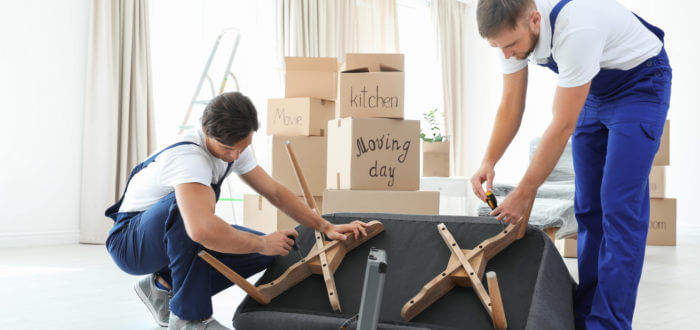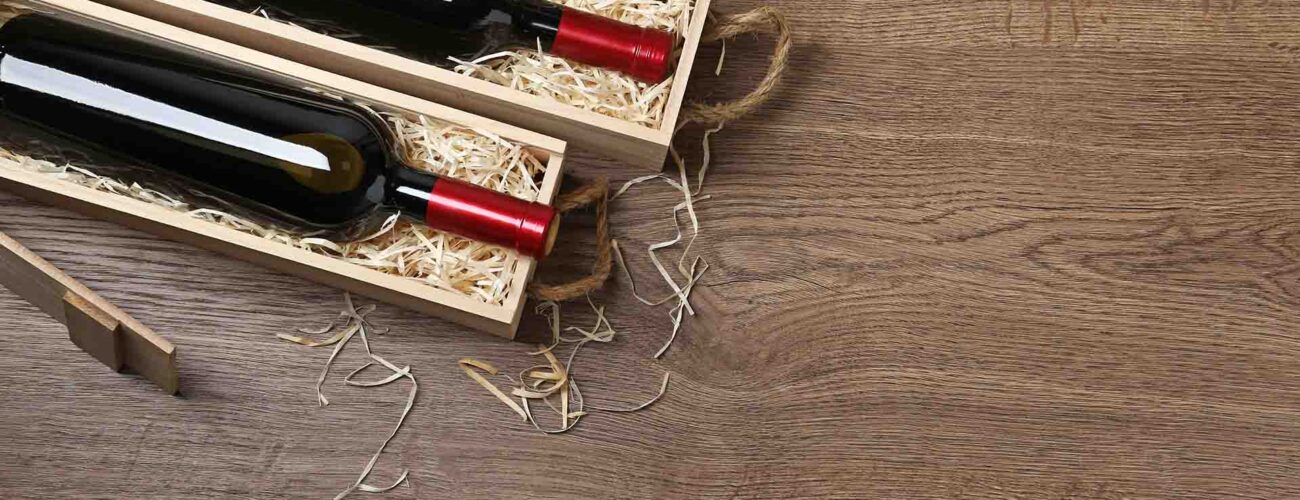

How to Pack Wine Bottles for Moving – The Ultimate Guide to Safeguarding Your Liquid Gold
Posted in How-to on November 13, 2023
Welcome to the ultimate guide on how to pack wine bottles for moving. Your collection is your liquid gold, and safeguarding it during a move is paramount. In this comprehensive guide, we’ll walk you through every step, ensuring your cherished bottles arrive at your new home intact. Let’s make your relocation slide smoothly as a sip of a perfectly aged wine.
When packing wine bottles for relocation, start by obtaining sturdy wine-specific boxes from a liquor store or packaging supplier. Wrap each bottle individually with bubble wrap, securing it with packing tape. Place the bottles snugly in the boxes, adding additional padding between them to prevent clinking and absorb shock during transit. Label the boxes as “Fragile” and “This Side Up” to guide movers and minimize the risk of mishandling. If you have any particularly valuable or rare bottles, it might be wise to transport them personally or hire long-distance movers experienced in handling this precious cargo.
Why Packing Wine Properly Matters
Ensuring a streamlined and efficient boxing-up process is crucial when it comes to storing your wine collection for relocation. The fragile nature of these items demands careful handling to preserve their quality during transit.
Their delicate glass structures make them susceptible to breakage, and any mishandling during transit can lead to irreversible damage. Proper organization of the boxing-up process ensures that each bottle is cushioned, secured, and protected from temperature fluctuations until it reaches your future destination.
Taking Inventory of Your Wine Collection
Before embarking on the process of moving your collection, it’s essential to create a thorough relocation inventory. This initial step involves assessing your possessions, noting the varietals, vintage, producer, estimated value, and quantities in your collection. Each entry becomes a valuable asset for organization and informed decision-making.
Beyond its organizational benefits, this catalog will be a fundamental resource when moving cross-country. However, the significance of this task extends beyond mere organization. Creating an inventory list is the cornerstone of an efficient relocation, aiding in the preservation of your wine’s quality and value.
Check the video below for some tips on how to take inventory of your collection.
Importance of Making a List for Insurance Purposes
Cataloging your collection before moving across the country is a methodical process that offers numerous relocation benefits. Beyond just creating a systematic record, this catalog serves as a valuable resource for insurance purposes.
Accurate documentation of each bottle strengthens your insurance coverage. In the unfortunate event of damage or loss during transit, this inventory becomes your safeguard, ensuring that you receive appropriate compensation.
Deciding Which Bottles to Take With You
Downsizing for a move allows you to prioritize and keep the items that truly matter. You should go for bottles that align harmoniously with the start of your new chapter and sommelier experiences. As you curate your selection, take a moment to reflect on your personal journey, identifying the bottles that hold the most significance to you.
However, equally important is considering the storage conditions at your future residence and keeping in mind the fact that some sorts may thrive with further aging while others are ready for immediate consumption.
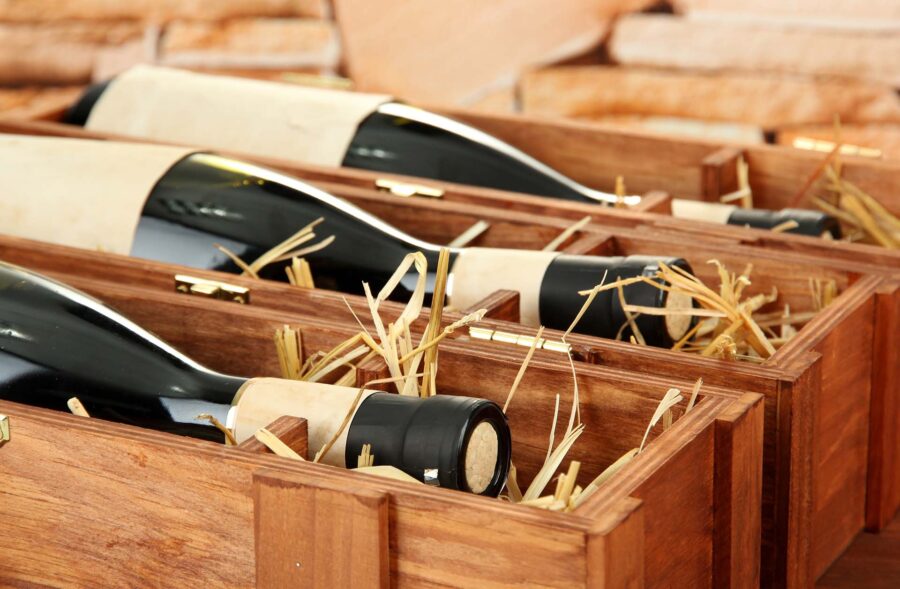
Pre-Move Handling Guidelines
The key to a successful and stress-free relocation lies in proper handling and ensuring that your collection arrives at your destination in pristine condition. One critical aspect of this is having a temperature-controlled storage solution in place.
Maintaining the ideal environment is essential to safeguard your possessions from temperature fluctuations and damage during the transition. By investing in proper storage, you provide a protective shield against spoilage and deterioration, preserving the integrity and quality of your valuable items throughout the relocation process.
Gathering Essential Packing Supplies
When relocating to a new home, having the right boxing-up supplies can make all the difference in ensuring a secure and safe journey for your valuables. These materials act as the guardians of your items, providing the necessary cushioning and protection to prevent damage during transport. To help you embark on this journey fully equipped, here’s a list of different packing materials you should consider obtaining:
- Specialized wine moving boxes – also known as bottle shippers, these specialized containers keep your items snug and secure, preventing breakage and spillage,
- Bubble wrap – versatile and effective, bubble wrap provides cushioning for delicate items, safeguarding them from impacts and vibrations,
- Clean paper – ideal for wrapping individual items, packing paper adds an extra layer of protection and prevents scratches,
- Duct tape – sturdy and reliable, packing tape seals boxes securely, ensuring that your items stay in place during transit,
- Styrofoam inserts – perfect for fragile items, they can fill gaps in boxes while preventing movement and minimizing the risk of breakage,
- Cardboard dividers – when you need to keep items separate within a box, cardboard dividers offer a convenient solution, especially for glass bottles,
- Stretch wrap – an excellent option for securing loose items and keeping them tightly bundled together,
- Markers and labels – use markers to label boxes with the contents and indicate their fragility.
Where to Find the Right Supplies
If you’re not sure where to get these supplies, there are several convenient options to consider. For starters, local relocation supply stores are often a dependable choice, offering a wide range of supplies tailored to various needs.
Online retailers provide a vast selection of needed supplies as well, allowing you to order everything you require from the comfort of your home. Additionally, don’t overlook the possibility of acquiring free or gently used boxes from local businesses or friends who have recently moved and save some money in the process.
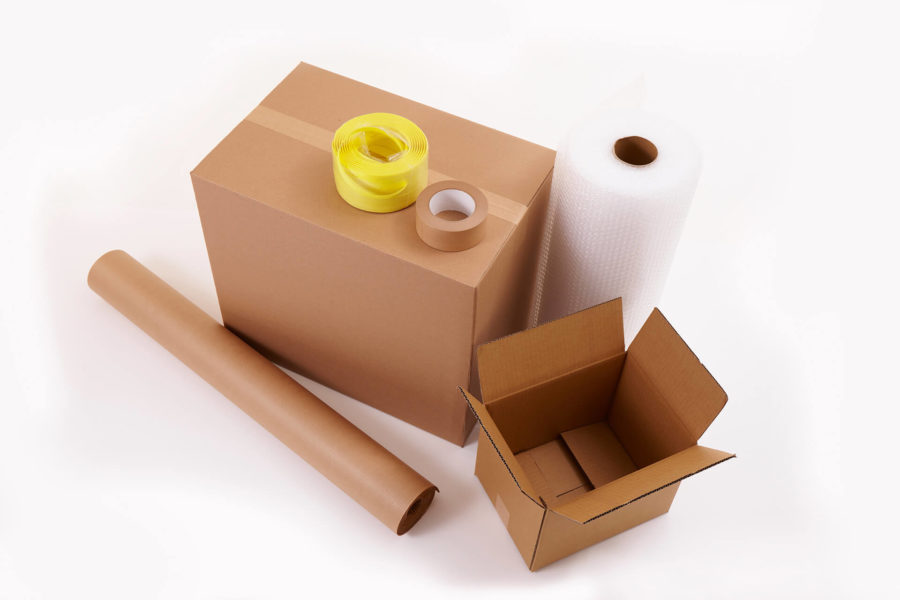
Step-By-Step Guide: How to Pack Wine Bottles for Moving
Following this helpful guide is essential for safeguarding your valuable collection during the relocation process. The steps below provide a structured and systematic approach to ensure each bottle is well-protected and arrives at your new destination in pristine condition.
Layering Your Wine Box for Maximum Protection
When it comes to safeguarding your possessions, creating a secure base in your box is the first crucial step. Begin by placing a sturdy layer of cushioning material at the bottom of the crate, which acts as a protective foundation. This base helps distribute weight evenly and absorbs shocks and vibrations while also providing a buffer against any unexpected bumps or jolts that you may encounter along the way.
Ensuring the Correct Orientation for Bottles
When placing the bottles, ensure that they lie flat on their sides. This position not only minimizes the risk of breakage but also keeps the corks in contact with the liquid, preventing them from drying out.
Dried corks can lead to air exposure and potential spoilage of your precious wines. This way, you not only safeguard your collection from damage but also maintain the quality and taste of your wines throughout the move.
Wrapping Individual Wine Bottles
Ensuring the safe transport of your collection begins with securely wrapping each item separately. This detailed process involves several key steps. First, prepare the bottle by cleaning and drying it thoroughly. Then, create a cushioned foundation using bubble wrap, positioning the item diagonally.
Proceed to wrap the object tightly, starting from the base and working your way up. Use duct tape to secure the wrap firmly, with particular attention to the neck and base. For added protection, consider an extra layer of bubble wrap or specialized glass protectors and seal the second wrap securely with tape, leaving no loose ends.
However, don’t forget to fill any gaps between the items within the crate. You can use materials such as crumpled paper, socks, shirts, or shredded paper as effective fillers. These fillers act as a buffer, preventing any movement or collision between the objects during transit.
Labeling and Sealing for Safe Transport
Proper labeling is crucial for the streamlined unpacking process. Clearly mark the crates with its content and as “Fragile.” This important label signals to movers and handlers that the contents are delicate and require gentle handling. Additionally, putting the sticker “This Side Up” ensures that the crates are kept in the correct orientation, minimizing the risk of belongings shifting or experiencing undue stress during transit.
When it comes to sealing, make sure to use high-quality duct tape to secure the top flaps of the box firmly. Ensure that the top of the crate is flat and there are no gaps or loose ends while providing an extra layer of protection against external elements and potential mishaps during the move.
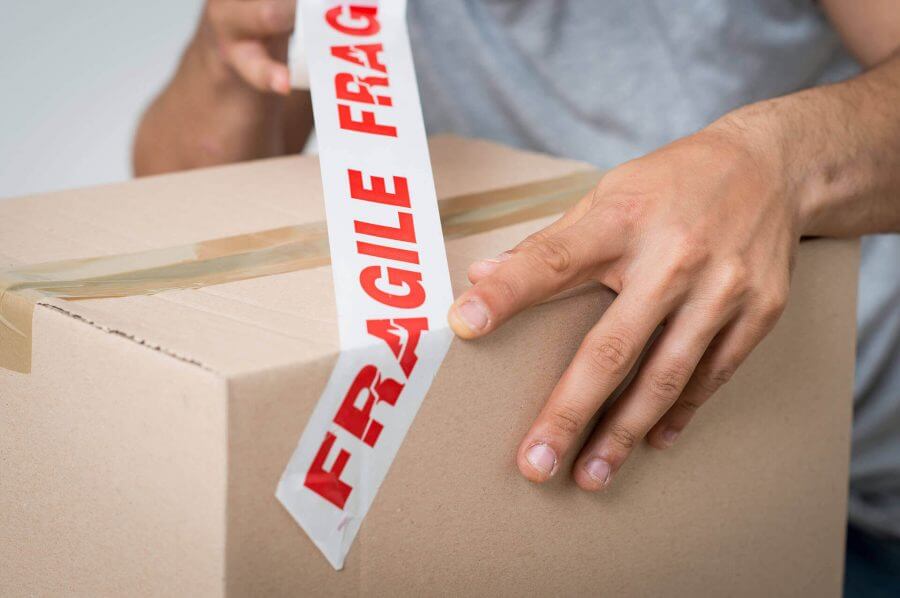
Special Considerations for Packing Vintage or Expensive Wines
Boxing up vintage or expensive items requires a heightened level of attention to detail to preserve their intrinsic value and quality during a move. In addition to the general storing guidelines, specific care instructions should be followed. Each bottle should be wrapped appropriately, potentially using multiple layers of bubble wrap or packing paper for enhanced cushioning and protection.
Given the sensitivity of these valuable collections, temperature control is paramount, especially when long-distance moving and being exposed to extreme temperature fluctuations. Investing in insulated shippers or temperature-controlled transport options helps maintain the ideal storage conditions throughout the journey.
Lastly, communicate openly with your chosen moving company or handlers about the valuable nature of your collection. By sharing this information, you ensure that they exercise the utmost care during transportation, further minimizing risks. These specialized considerations are essential to guarantee that your special items reach you unscathed, allowing you to continue savoring their excellence for years to come.
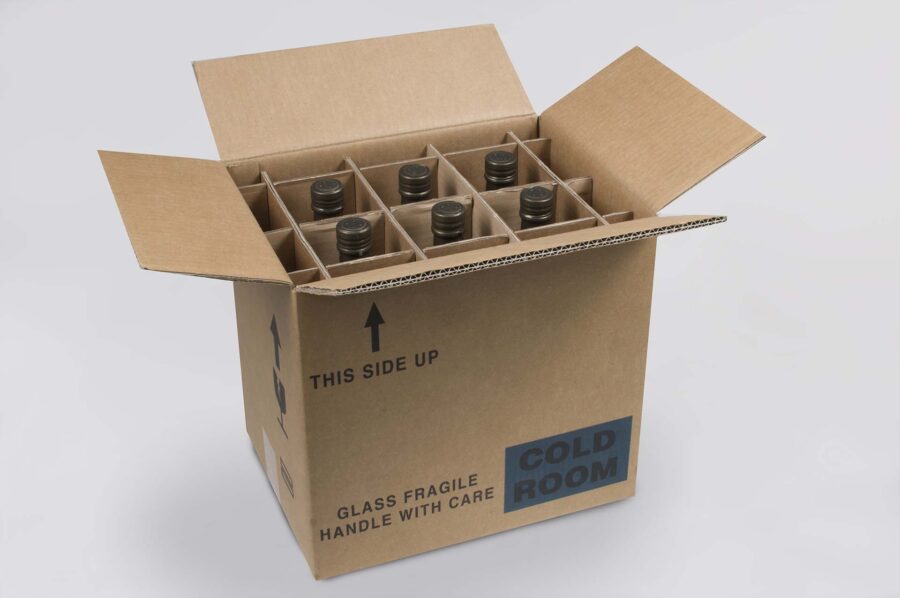
Hire Cross Country Movers to Help You With This Sensitive Task
To navigate this sensitive task with confidence, considering booking cross-country moving services from professionals is often a wise decision. Cross Country Movers offers services specifically tailored to the intricacies of long-distance relocations. Our expert crew brings a wealth of experience, logistical know-how, and the right equipment to ensure that your precious collection arrives safely and securely at your future destination.
In addition to our transport expertise, our company offers professional packing services specifically designed to alleviate the stress of relocating and boxing up valuable and easily breakable items. Our services encompass professional storing techniques, the use of appropriate materials, and a deep understanding of fragile item handling.

Cheers to New Beginnings and the Safe Relocating of Your Wine Collection
Congratulations! You’ve reached the end of this guide, so raise your glass to new beginnings and seamless relocations. If you need any assistance, the dedicated team at Cross Country Movers will provide the expertise and care necessary to ensure your belongings are shipped without hiccups. If you’re ready to embark on a journey with the peace of mind that comes from professional assistance, contact us today. Let’s make your relocation a toast to new adventures and unforgettable experiences. Cheers!
FAQ
How Should I Handle Sparkling Wines or Champagne?
Sparkling wines and champagnes can be delicate due to their carbonation. To handle them safely, keep them upright at all times to prevent the cork from popping out and causing potential leakage. Follow the same boxing-up techniques as for the rest of your collection, but use extra care to cushion and secure them.
Do Temperature Fluctuations Affect Wine During Moving?
Extreme cold or heat can cause the liquid to contract or expand, potentially damaging the cork and compromising its quality. Try to relocate your collection during moderate temperatures whenever possible, or consider utilizing insulated packaging if relocating in extreme conditions.
What Legal Restrictions Should I Be Aware of When Moving Wine Across States?
State and federal laws govern the transportation of alcohol across state lines. Be sure to research and comply with the specific regulations in both your departure and destination states. Some states have restrictions on the quantity and types of alcohol you can transport, so it’s essential to be informed.
Can I Insure My Wine Collection During the Move?
Yes, you can often insure your collection during a move. Check with your insurance provider to explore coverage options. Ensure that your policy adequately protects the value of your entire collection.
Is It Necessary to Unpack Wine Bottles Immediately Upon Arrival?
While it’s not always necessary to unpack bottles immediately, it’s advisable to do so as soon as possible. This allows its proper acclimatization to the new environment and ensures you can identify any damage or issues right away.





